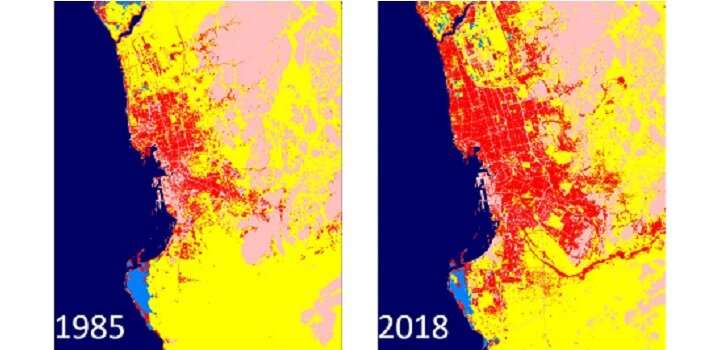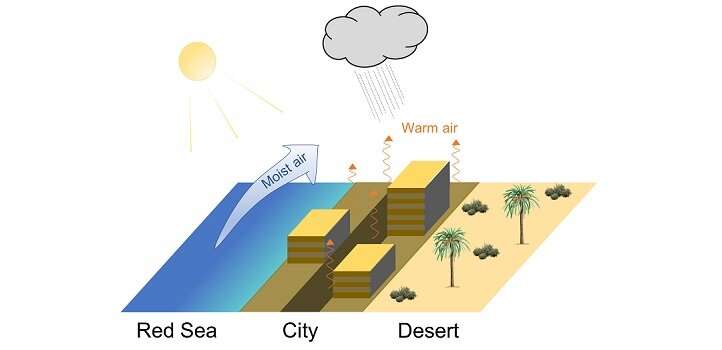Jeddah gets caught in the rain

Urbanization could cause 26 percent more rain to fall over Jeddah city than over the surrounding desert during storms.
The coastal city of Jeddah, located on the Red Sea, has a population of around 4 million and is the commercial center of Saudi Arabia. Its main weather threat is winter storms that bring heavy rains, strong winds and flash flooding. In 2009, a severe storm in the city claimed 161 lives and caused 1 billion USD worth of damage; however, these potentially devastating storms are also an important source of water for the arid region.
"Saudi Arabia has a national plan to double rainfall harvesting by 2030 to address the water resource challenge," says Thang Luong, postdoctoral fellow from KAUST. Understanding how storms evolve over Jeddah could help the city better forecast future events, reduce damage and support the country's plans to collect the precious rainwater.
Like many cities, Jeddah experiences an urban heat island effect, whereby daytime heat absorbed by buildings and roads is slowly released at night. This can affect local weather, but it is not clear how or if Jeddah's heat island effect affects winter thunderstorms—although it appears that they occur mainly in the early morning.

Earth Science and Engineering Professor Ibrahim Hoteit, working with Luong and his team at KAUST, combined atmospheric and land surface models to simulate rainfall during 10 severe storms over Jeddah under urbanized and presettlement scenarios. In the urban scenario, they applied an urban canopy model to account for heat fluxes from rooftops, walls and roads as well as the wind-altering effect of streets and buildings. In the desert scenario, land cover was considered as barren or sparsely vegetated.
Jeddah experienced heavier and more prolonged rainfall under the urban scenario, suggesting that something was enhancing the storm's energy and blocking its passage. Heavy rainfall events brought about 26 percent more rainfall in the urbanized scenario than in the desert scenario. "We found that surplus energy stored in the urban surface early in the day can be released and make storms stronger at night," says Luong. The models showed rainfall decrease immediately downwind from the city, likely due to buildings disrupting airflow.
The well-documented 2009 flood provided an ideal test case, and the team found that their model accurately reproduced the observed precipitation. "These modeling capabilities are valuable tools for forecasting flash floods in Jeddah," says Hoteit, "and will help policy and planning for mitigating further damages from severe weather events."
A few unanswered questions remain. "We want to find out which elements of urban physics are the most critical in driving rainfall," says Luong, "and investigate what would happen to storm evolution if the urban area spread along the Red Sea coast."
More information: Thang M. Luong et al, Impact of Urbanization on the Simulation of Extreme Rainfall in the City of Jeddah, Saudi Arabia, Journal of Applied Meteorology and Climatology (2020). DOI: 10.1175/JAMC-D-19-0257.1



















